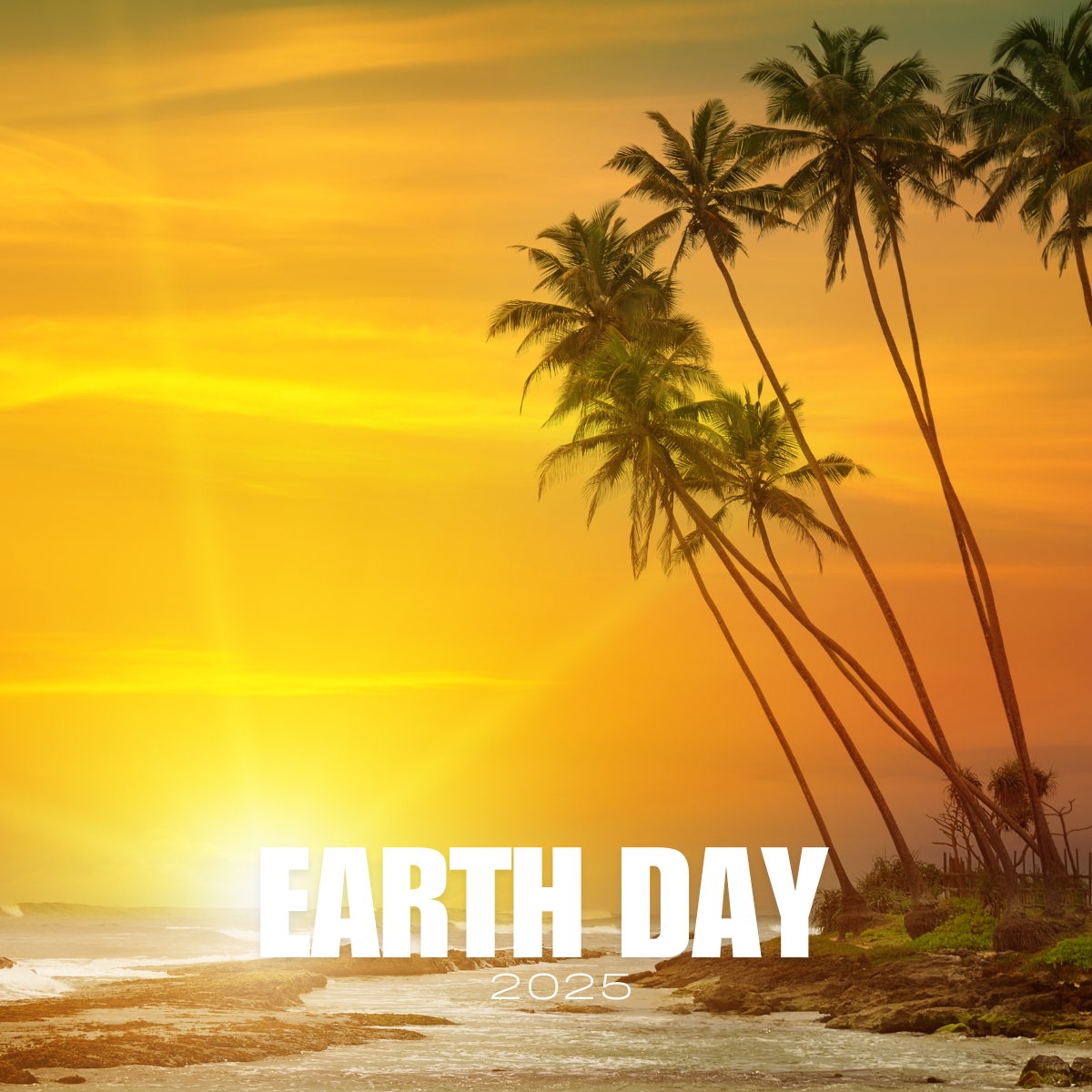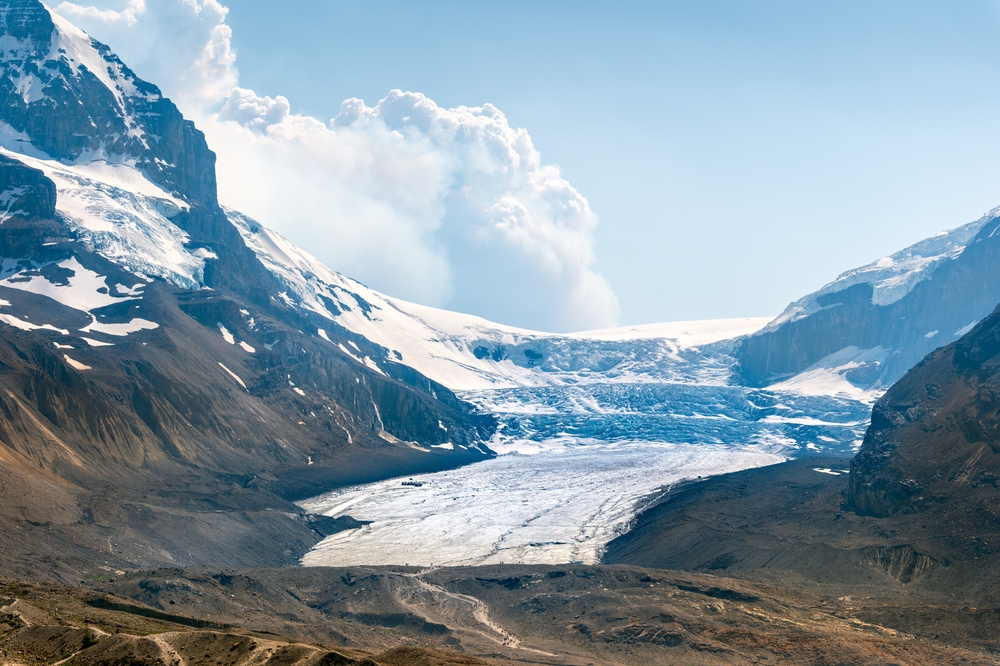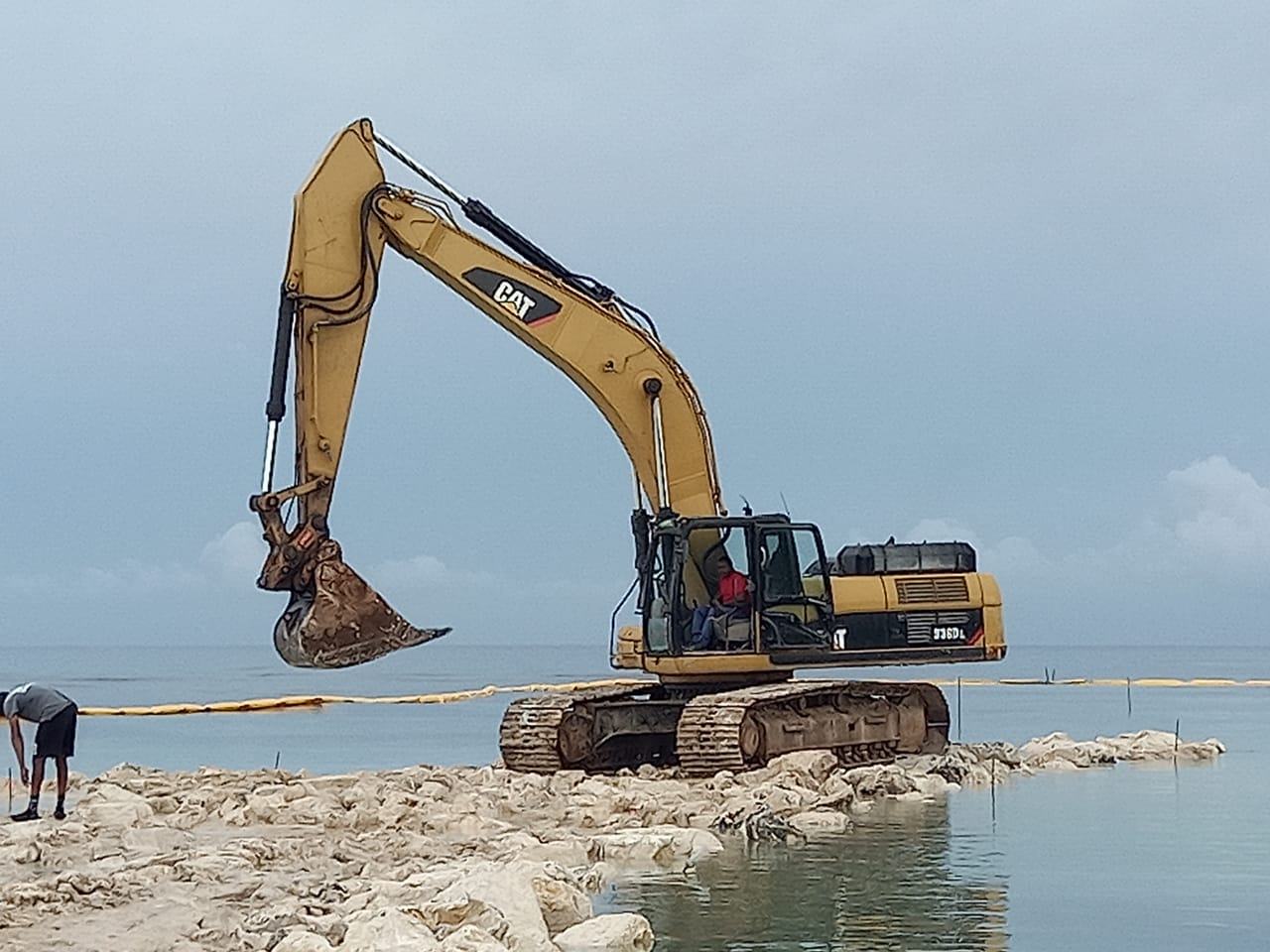Designing a beach restoration project requires a specialised sort of detective work. The slope of a beach, the rocks found at the shore, and “scarps” – the steep sand walls formed by wave action – all provide clues to a beach’s health or to the causes of its deterioration.
South Frigate Bay Beach, long one of the most popular and iconic beaches on the island of St. Kitts, had been suffering erosion for years. The presence of rocks on the dry beach and in the wading area was an early clue of harsh wave action, as was a steep scarp. Twice, engineers had nourished the beach, placing carefully-chosen sand from offshore onto the beach face. But the erosion continued. Locals, who had grown up playing as children at South Frigate Bay and later enjoying its nightlife, stopped coming, and taxi drivers, embarrassed at the beach’s condition, shuttled tourists over to Cockle Shell Beach instead. Frigate’s businesses and vendors suffered,
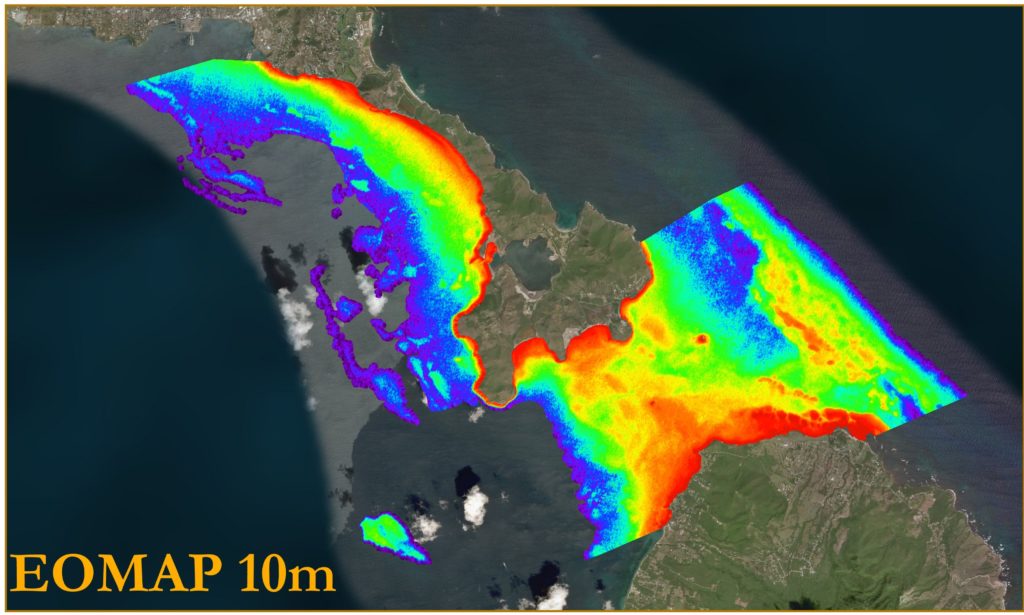 In 2019 the Ministry of Tourism hired Smith Warner International to conduct a thorough evaluation of the erosion and propose a restoration plan. Coastal engineers Elisabeth Mondon and Jamel Banton investigated the beach, bathymetry (underwater topography), and wave climate using a variety of tools and techniques. They analysed satellite images, acquired through a partnership with German remote sensing company EOMAP, to expand extensively on previous studies of the beach zone’s bathymetry. They conducted traditional beach profile surveys to understand variations in the beach along its length, and meticulously analysed sediment samples from different parts of the beach. The comparison of historical satellite images and profile surveys, taken between 2011 and 2019, showed the true extent of the erosion.
In 2019 the Ministry of Tourism hired Smith Warner International to conduct a thorough evaluation of the erosion and propose a restoration plan. Coastal engineers Elisabeth Mondon and Jamel Banton investigated the beach, bathymetry (underwater topography), and wave climate using a variety of tools and techniques. They analysed satellite images, acquired through a partnership with German remote sensing company EOMAP, to expand extensively on previous studies of the beach zone’s bathymetry. They conducted traditional beach profile surveys to understand variations in the beach along its length, and meticulously analysed sediment samples from different parts of the beach. The comparison of historical satellite images and profile surveys, taken between 2011 and 2019, showed the true extent of the erosion.
A Complicated Wave Climate
It was clear from the analyses that the wave climate at South Frigate Bay was tricky. Summer waves were coming from the east and diffracting, or bending, around the neighbouring island of Nevis. Come winter, waves approached more from the east-northeast and bent around the northern tip of St. Kitts itself. St. Kitts had weathered several hurricanes whose giant waves ate away at its beaches. There was an overall trend on both South Frigate Bay and nearby South Friar’s beaches of erosion to the south and the accumulation of sand toward the beaches’ north ends.
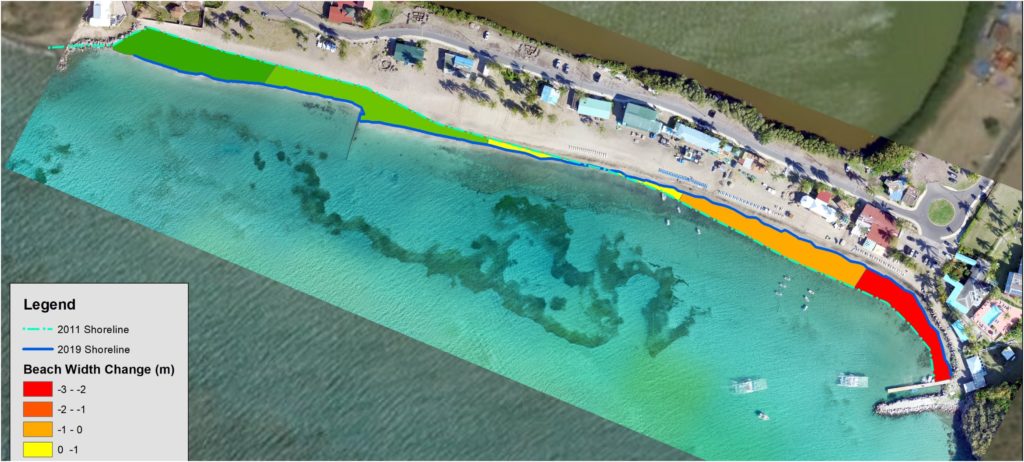
A Plan to Improve and Protect the Beach
With this battery of information at hand, Elisabeth and Jamel felt certain that South Frigate Bay Beach and South Friar Bay Beach could be saved. What they recommended was a hybrid solution: structural shoreline protection along with beach nourishment. Rather than simply placing sand back on the eroded beach, Smith Warner proposed two submerged breakwaters (reef-like structures made of large boulders) to reduce the size of the waves that could make it to shore. The breakwaters would be wide enough to withstand the brunt of heavy storm waves, but would not be visible to beachgoers from the shore. Submerged breakwaters often attract fish and act as a base for coral growth, which can be a great snorkeling attraction for visitors.
The shoreline protection plan also included three groynes (collections of boulders placed perpendicular to the shoreline) that would reduce the amount of sand loss while allowing limited sediment to flow through. Smith Warner located several potential sites offshore where the sand was approximately the same grain size and colour as the native beach sand. During the nourishment phase, dredging professionals would take sand from this “borrow site” and place it, according to design, on the beach. The total amount needed for this final step in the restoration of South Frigate Bay Beach was 8,800 cubic meters.
Smith Warner International has a long-established design-build business and often will take projects from the early planning stage through the implementation, doing the construction work itself. In the case of South Frigate Bay Beach, tourism ministry officials hired Smith Warner to conduct the coastal assessments and to design the beach restoration and structural shoreline protection. Managing Director and Senior Coastal Engineer Jamel Banton says, “Beach enhancement requires careful thought to get it right, and we are thankful to the Government of St Kitts for entrusting the rehabilitation of such a prized asset to us.” Using Smith Warner’s design specifications, the Government moved forward. Carlene Henry-Morton, Permanent Secretary at the St. Kitts Ministry of Tourism explains, “We made it a point at the Ministry to engage our citizens and to give them the opportunity to show what they can do.” The Ministry hired St. Kitts-based Trans Global Engineering, a firm run by brothers Greg and Mario Williams. “We wanted them to be able to cut their teeth and be able to deliver on a huge project like this,” Morton-Henry continues. Greg Williams, a civil engineer, says, “For this project, instead of working with a typical single contractor, we had two contractors. One working on the land side and one doing the ocean work.”
Smith Warner had estimated that the project would take 5 – 7 months to complete. But there were challenges and setbacks, mostly due to weather. Now, with tourism moving into high season, nearly all the work is complete and the project has come in on budget at a cost of nearly US $4 million. The Ministry has decided to wait until the spring before putting on the “finishing touches” so that the beach is clear of construction equipment.
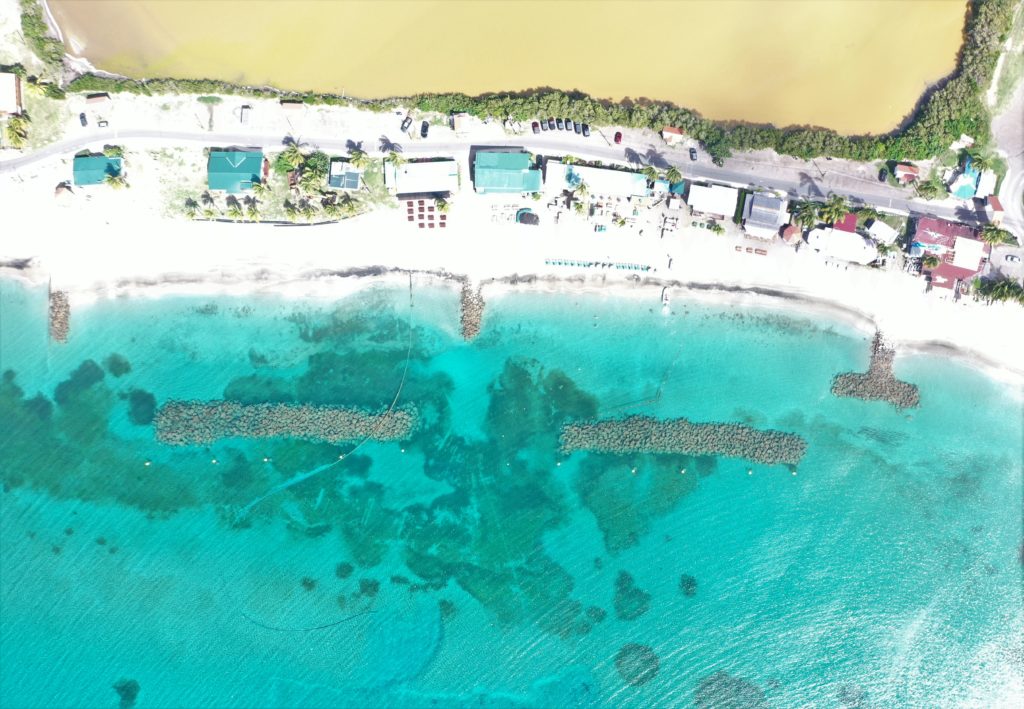
Excellent Reviews
The reviews have been excellent. Ms. Morton-Henry reports, “Our taxi drivers, our tour operators, our bars, those that benefit directly and indirectly… All of those businesses are beginning to exhale a bit. The season looks really good. Between now and March, we’ll have about 201 cruise ship calls to port.”
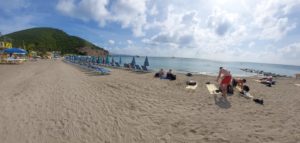 Greg Williams adds, “We definitely feel accomplished. Every time we go on the beach, the vendors and the bar owners compliment the excellent work that was done.”
Greg Williams adds, “We definitely feel accomplished. Every time we go on the beach, the vendors and the bar owners compliment the excellent work that was done.”
Next up, the restoration of neighboring South Friar Beach. Smith Warner International, again, has provided analysis and design. The St. Kitts team is on board to bring back a beautiful and climate-smart beach, with its healthy offshore reef, for all to enjoy.
